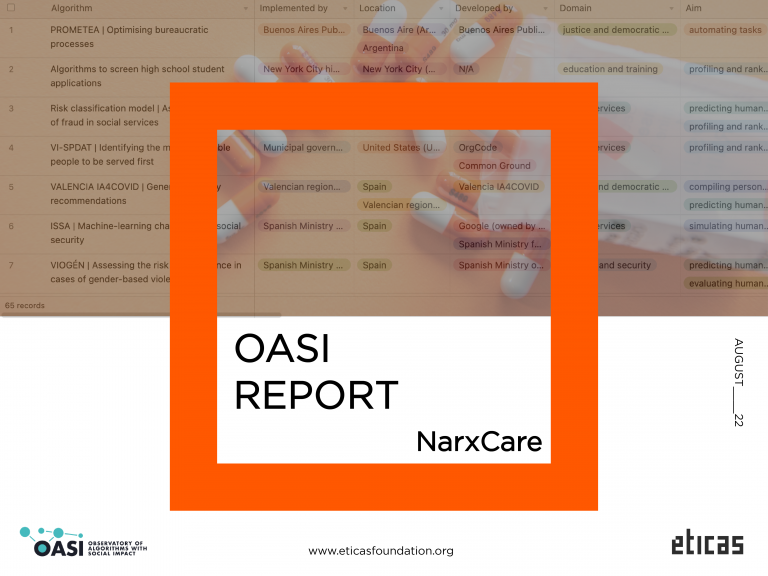
In 2009 Catalan prisons began using an algorithmic tool to evaluate the risk of violent recidivism (or reoffense of a violent crime after release) for all prisoners in the region. This mechanism, called e-Riscanvi (e-Riskchange or e-Riesgocambio), was established by the Catalan Consejeria de Justicia (Ministry of Justice) to assess the risk of violent reoffense even if they have no previous violent background. According to public documents, the ultimate aim of the system is to improve the treatment of inmates (Europa Press 2009). The system classifies behavior in four categories: self-directed (suicide or self-harm), intra-institutional (against inmates or prison staff), violation of sentence (escape or not return from a permit) and violent crimes (Generalitat de Catalunya 2016). After categorizing behavioral inputs and analyzing all 43 variables within a case, the model determines if the prisoner has a high, medium, or low risk of violent reoffense after release.
The establishment of this sort of system was recommended by the Commission for the Study of Recidivism in Serious Crimes, established in 2007 by the Catalan government (Resolution JUS / 2362/2007, DOGC no. 4937, July 24). The Commission proposed a series of actions to improve performance in the field of prevention of recidivism in serious crimes, including the establishment of a specific technical procedure to assess the degree of risk of individuals (Generalitat de Catalunya 2008). According to the proposal, the system should also be shared by all the institutions: the administration of justice, penitentiary services and police forces.
Along with these recommendations, the e-Riscanvi system was inspired by other international models (such as the ‘Oasys’ system used in Great Britain since the early 90s and the Canadian penitentiary system). After being tested for 16 months with 675 random prisoners and compared to a 225 person control group, Catalan authorities stated that e-Riscanvi proved successful: the reliability of the recidivism predictions went from 67%, with only human clinical criteria, to 75%, with the support of the algorithm to combined all the static and dynamic variables (Europa Press 2009).
In line with the rationale defined by the Commission for the Study of Recidivism in Serious Crimes, some authors have linked the introduction of e-Riscanvi in the Catalan Law enforcement system to an improved capacity of recidivism prediction (Singh et al. 2017). However, it should be noted that the algorithm only goes so far: once the results have been obtained through calculation, they are usually modified/refined during an assessment conducted by the multidisciplinary team. Thus, the algorithmic output is only one instrument that is a part of a more exhaustive process (Mendieta Colmenero 2013). The fact that the system is noncomprehensive and human-dependent is not a flaw, rather it’s in accordance with the current data protection policy. The EU’s General Data Protection Regulation states that an automated decision-making system should only be used with the external judgment of a human (see article 22 GDPR).






